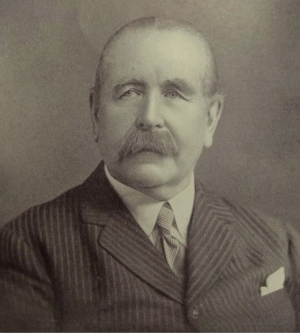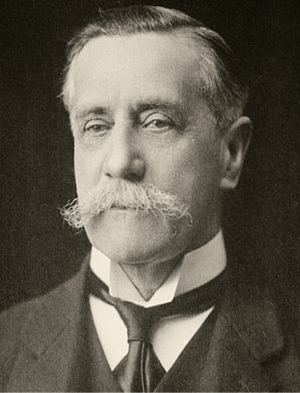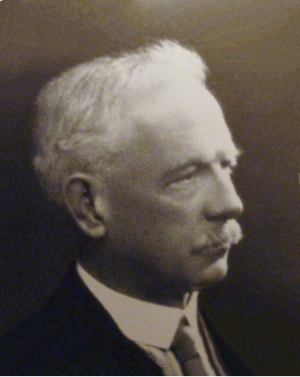The 1923 Election in Kildare –
A Counter Revolution?
Published in the Liffey Champion, 12th August 2023
The election to the 4th Dáil which was held one hundred years ago in August 1923 was the first election following the end of the Civil War and according to some historians the results showed apparent signs that the electorate voted to a large degree to reverse the progress of the revolution that had taken place since 1916. Some would argue that a counter revolution had taken place. The definitions of a counter revolution is an act following a revolution to overturn it or reverse its course. This would seem to be the case regarding the result of the 1923 election in Ireland. Of all the constituencies participating in the election, Kildare is undoubtably the most visible example of where a counter revolution took place.
In mid-1923 with the principal function of the 3rd Dáil fulfilled, a general election was necessary and in preparation, constituency revisions were undertaken with the number of Dáil seats increased from 128 to 153. As a result, the Kildare-Wicklow constituency was broken up with Kildare county becoming a separate three-seat constituency. Nationally the franchise was also extended, with 35,000 new voters eligible to vote. This included for the first time both males and females aged twenty-one and over.
Four Parties Begin Preparations
In the new constituency of Kildare the four distinct movements that had contested the 1922 election – Pro-Treaty Sinn Fé'in, Anti-Treaty Sinn Féin, Labour and the Farmers Party, began electioneering in early 1923. Labour’s Hugh Colohan was the only sitting TD from the previous election.
Pro-Treaty Sinn Féin had become a distinct party with the launch of Cumann na nGaedheal on the 27th of April 1923. New branches were established throughout the country including a branch formed in Naas on the 7th of June under the presidency of the local curate, Fr. Patrick Doyle. Notably, it was supported by the remnants of the Redmondite Nationalists such as Michael Fitzsimons. But the biggest boost was support from George Wolfe, the much-respected Protestant Nationalist who joined the committee and worked alongside former IRA personnel such as Thomas Lawler.
A public rally in Naas to launch the new party in the county was held on the 15th of July. Several leading Cumann na nGaedheal politicians addressed the gathering which included three cabinet ministers; the vice-president Kevin O’Higgins, Éamonn Duggan and Ernest Blythe. Within two weeks, the organization had extended throughout the county with twenty new branches formed.
A total of nine candidates from the four parties were nominated to contest the election. Labour, boosted by a rally in Newbridge with Big Jim Larkin as the key-note speaker, was the first to choose candidates, selecting Hugh Colohan, the out-going TD and Michael Smyth as his running mate.
Cumann na nGaedheal was next in the field on the 2nd August and put forward three candidates. Thomas Lawler and Simon Malone were selected. They were regarded as front runners having stood down on the last occasion due to the election pact. Both represented different levels of opinion in the party with Lawler belonging to the military section of the movement, whereas Malone identified with the political side. To add even greater appeal, George Wolfe was also selected. As a long-term Redmondite supporter and a prominent member of the Farmers Union, his addition was aimed to influence The Farmers and Ratepayers convention which was due to take place the following evening.

George Wolfe.
This convention was highly representative with almost 100 delegates from sixteen clubs in attendance. As the three candidates chosen by Cumann na nGaedheal were farmers, former Kildare County Council chairman Stephen J. Browne, proposed that a Farmers candidate should not be nominated as this might split the farmers vote. However, this motion was overwhelmingly rejected, and former county councillor, John Conlon was selected to contest the election on behalf of The Farmers and Ratepayers Party. He was a native of Walshestown, Newbridge and a former Nationalist councillor. Before taking up farming he had been editor of the Carlow Nationalist. Conlon’s supporters included former Redmondite Nationalists and Unionists.
On the anti-treaty republican side, Donal Buckley, Art O’Connor and Thomas Harris who were all from the northern section of the county, were selected and announced at a rally in Naas on the 8th of August. Harris, an escaped prisoner, chaired the meeting and at its conclusion was arrested. Both Buckley and O’Connor were also in prison. Buckley, having been on the run earlier, was re-arrested between the ending of Civil War hostilities and the election.
The 1923 Election
The election campaign was lacklustre with none of the scenes of violence typical of previous campaigns. The republican campaign was hampered by censorship and the imprisonment of many of its activists. The prisoner issue was highlighted at meetings by Muriel MacSwiney, widow of Terence MacSwiney; James O’Connor from Celbridge, brother of Art O’Connor; and Michael Smyth, who argued that the prison gates should be thrown open. Unemployment, especially in Newbridge, resulting from the British army evacuation, was a major issue in the Labour Party campaign.
Cumann na nGaedheal was not as prominent on the campaign trail as the other parties. Of the three candidates, George Wolfe excelled, and at one meeting was even introduced as a descendant of Wolfe Tone. He made no attempt to deny the family connections and turned the patriot’s name to his political advantage, by referring to Wolfe Tone as the man who bore the same name as his grandfather.
John Conlon, the Farmers’ and Ratepayers’ candidate, undertook a vigorous canvass focusing on farming interests, falling agriculture prices and rates. He had the support and assistance of former Redmondites such as John Healy from Clane and Unionists such as Bertram Barton from Straffan.
It was no surprise that the only sitting TD, Labour’s Hugh Colohan, topped the poll, but there was no second seat for Labour even though it polled well in excess of a quota and obtained three times the national average. The base of the two Labour candidates was in the Newbridge and the Curragh areas, and the party successfully capitalised from the severe unemployment in this region.
The biggest upsets were the return of former Redmondite Nationalists, John Conlon and, in particular, George Wolfe. The number of first preferences for Cumann na nGaedheal was the third lowest in any constituency in the country.
The support of former Nationalists, particularly farmers, explains the performance of Conlon and also Wolfe, who had only been associated with the government party for six weeks. For Conlon, who gained almost eighty per cent of a quota, it was a respectable vote with the Farmers Party obtaining seven per cent more than the national average.
Although the result for Cumann na nGaedheal was disappointing, the party could derive some comfort from the fact that seventy-nine per cent of the Kildare electorate supported pro-Treaty candidates. The results in the county clearly showed that despite a crushing defeat in the Civil War, there was still strong republican support in the constituency. Even though large numbers were in prison and could not vote, the republican vote was within six per cent of Cumann na nGaedheal, an overall increase of two per cent since the previous election. This reflected a sympathy vote due to the executions. The message, however, from the voters was clear; be content with the level of independence obtained and deal with economic issues.
Election Result in Kildare, a Counter Revolution
Clearly, the most visible evidence in Ireland where a counter revolution had taken place was the constituency comprising County Kildare where moderate politicians were elected instead revolutionary candidates.
Politically, in 1923 Kildare was an example of a county that to a large extent returned to its Redmondite roots. This was reflected in the election results which saw the rejection at the polls of militant activists who had been prominent during the War of Independence and Civil War. Instead, the electors of Kildare selected non-compromising constitutional politicians.
An examination of unsuccessful candidates is the first step in analysing this point. All six defeated candidates had an important role as activists in the revolution. Donal Buckley was a TD during the War of Independence and also a veteran of Easter Week. Art O’Connor had also been a TD and a member of the revolutionary government until January 1922. Tom Harris was an Easter Week veteran and later an IRA commandant. All three were imprisoned for participation in the Civil War. Surprisingly, Labour’s Michael Smyth was also rejected at the polls. He had an Easter Week involvement and later served as an IRA commandant. The two remaining unsuccessful candidates were also prominent during the War of Independence with Thomas Lawler serving as an IRA commandant and Simon Malone active on the political side.

Lord Mayo.
In contrast, the election resulted largely in an ‘old guard’ who had not favoured republican aims being elected to the Dáil. None of them had previously been members of either Sinn Féin or the IRA. George Wolfe, representing Cumann na nGaedheal, had previously served as vice chairman of Kildare County Council, until 1920 and was a staunch supporter of John Redmond. Likewise, John Conlon of The Farmers and Ratepayers Party, was also a Redmondite Nationalist serving as a county councillor until 1920. The third TD, Hugh Colohan, while supporting some revolutionary policies of Sinn Féin prior to the treaty was never a member of that party or the IRA.
Residents from the county who were appointed to the Senate was another sign of back tracking from revolutionary policies. Of the five senators appointed from the county, three were former Unionists who had an active role of resistance to revolutionary change from 1912. Lord Mayo was acknowledged as the leader of the Kildare Unionists during the Irish Revolution, General Bryan Mahon was a former commander in chief of the British army in Ireland and Sir Henry Greer had acted as a spokesman for revolting British army officers during the Curragh Mutiny in 1914. James J. Parkinson, nominated to the Senate by W.T. Cosgrave to represent Kildare equine interests, was a former Nationalist. Prior to the 1918 Election, he was regarded as a replacement Irish Parliamentary Party candidate for South Kildare, if the sitting MP, Denis Kilbride, had chosen to retire. William Cummins from Labour was the only Senator from the county elected to the position and he had played no role in the revolution.

Michael Fitzsimons.
Another visible sign of reversing the course of the revolution was the election of Michael Fitzsimons in succession to Donal Buckley as chairman of Kildare County Council. He had been the only Nationalist elected to the county council in the 1920 election and steadfastly refused to accept the authority of the Revolutionary Dáil. In addition to the eight Oireachteas members (three TDs and five Senators), he had never been a member of either Sinn Féin or the IRA.
Kildare was an outlier the only county in the Irish Free State where all politicians elected to senior positions in 1923 had no role in the revolution and is the best example in the country of a county where a constitutional political counter revolution had taken place.
Sources
- Leinster Leader, 23 Dec. 1918
- The Nationalist and Leinster Times, 22 June 1935
- Irish Independent, 16 Sept 1948
- Donal O’Sullivan, The Irish Free State and its Senate: A Study in Contemporary Politics (London, 1940), pp 90–1
- Seamus Cullen, Kildare: The Irish Revolution 1912–23 (Dublin, 2020), pp 135–7, 141
- Seamus Cullen, ‘Loyalists in a Garrison County: Kildare, 1912–23’ in Brian Hughes and Conor Morrissey, (eds.), Southern Irish Loyalism, 1912–1949 (Liverpool, 2020), p. 262
